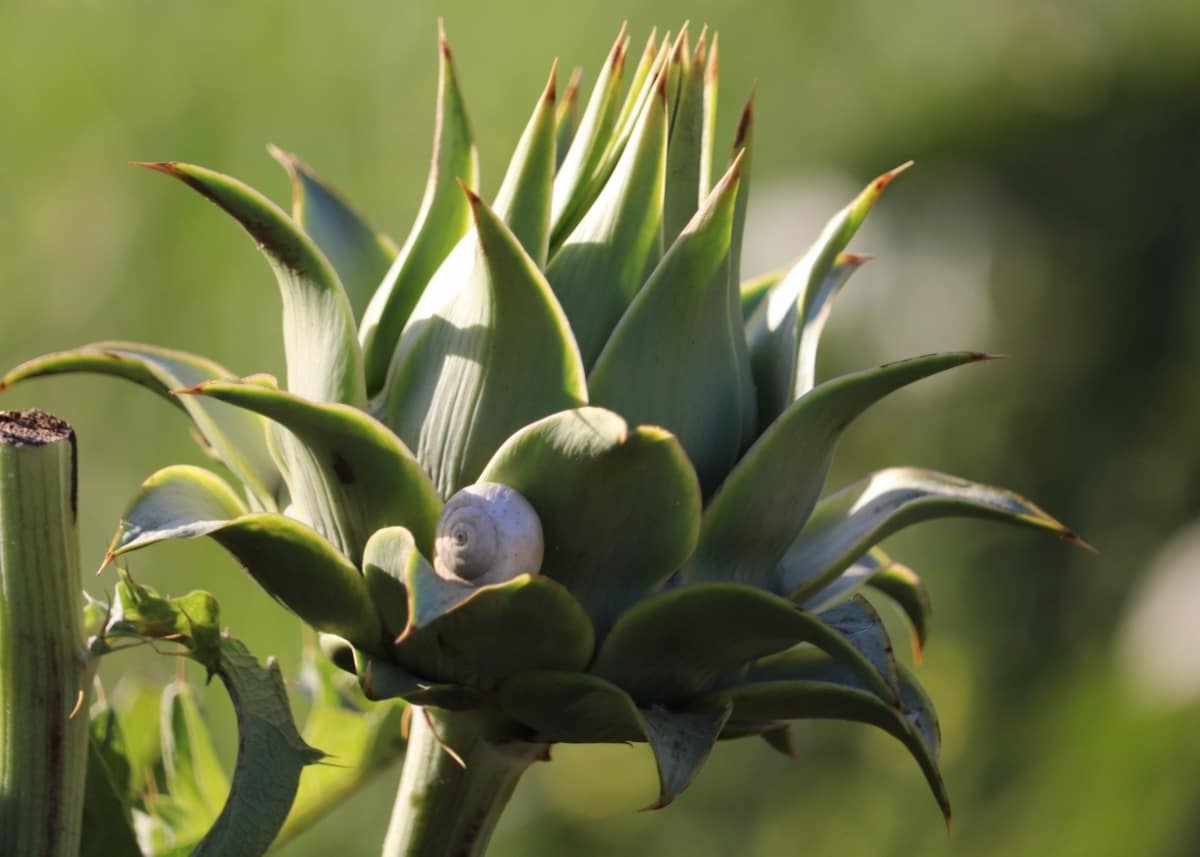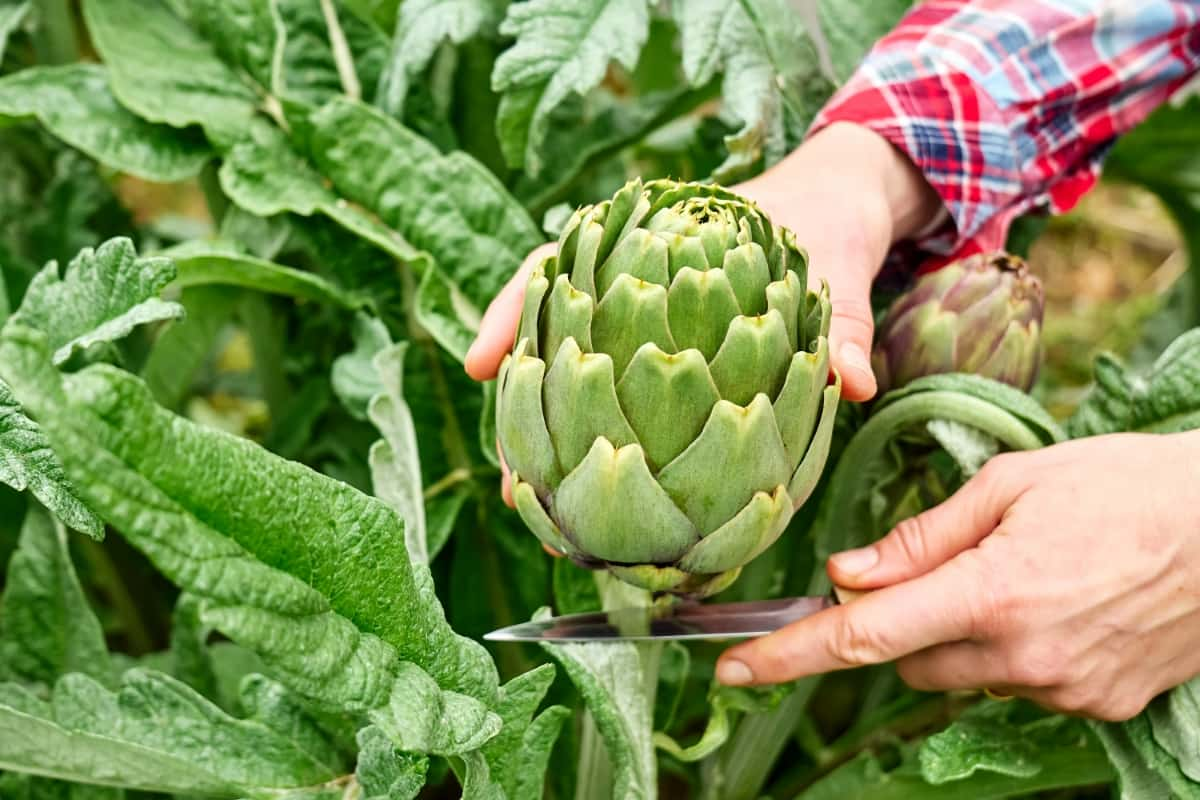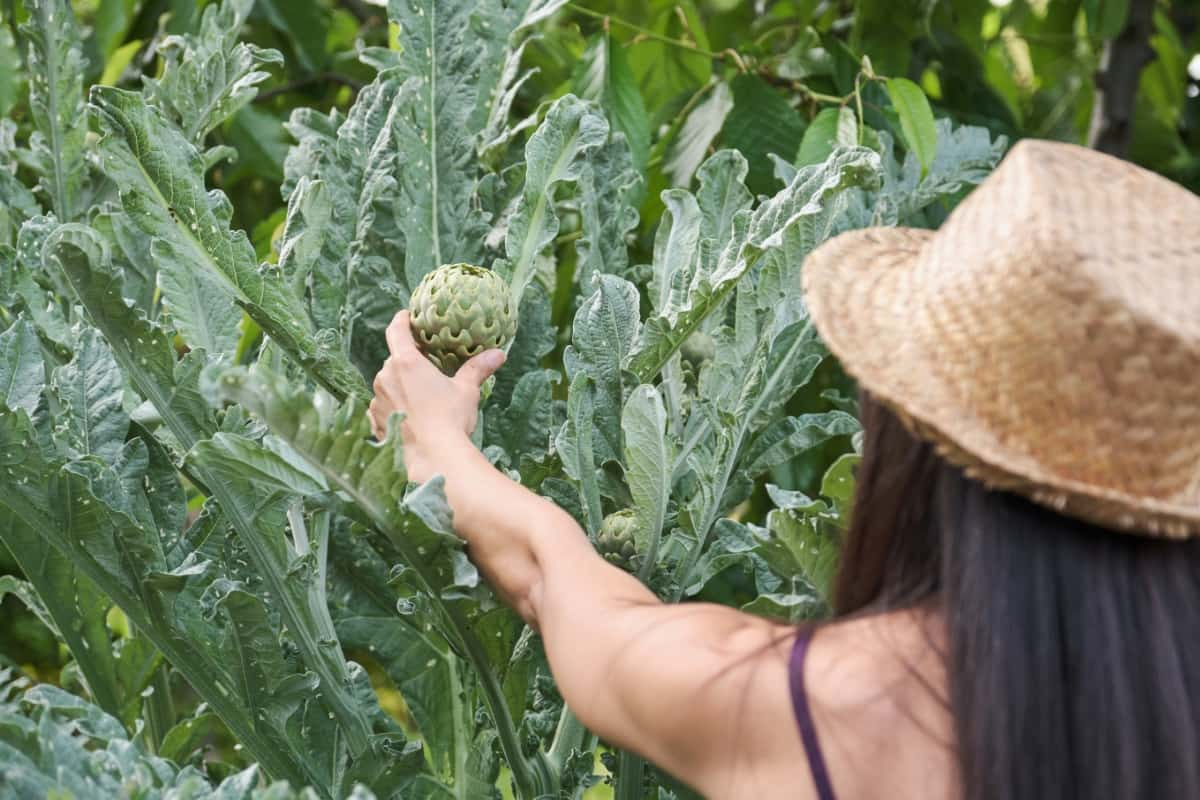Pruning and training Artichoke plants for optimal growth is not only a labor of love but also an essential practice to ensure healthy, thriving crops. Additionally, pruning allows for better air circulation and sunlight penetration throughout the plant, which reduces the risk of fungal infections.

How to Prune Artichoke Plants
The Growth Cycle of Artichoke Plants
The growth cycle of Artichoke plants is an attractive journey that begins with planting the seeds or cuttings in well-drained soil. These plants thrive in sunny locations, so finding the perfect spot for them is crucial. Once planted, Artichoke plants go through several stages of growth. They start with germination, where tiny sprouts emerge from the soil and reach for the sun. As they continue to grow, their leaves become more prominent and develop a beautiful silvery-green color.
During the vegetative stage, Artichoke plants focus on producing more foliage and strengthening their root system. This stage can last anywhere from three to six months, depending on various factors such as climate and care. In due time, buds will form at the center of these majestic plants. These buds are what we know as Artichoke’s delicious edible flowers that we eagerly anticipate harvesting.
Tools and Equipment Needed for Pruning and Training Artichoke Plants
The essential tool is a sharp pair of pruning shears or secateurs. These will be used to remove dead or diseased leaves, as well as any unwanted shoots or suckers that may be competing with the main plant for nutrients. In addition to pruning shears, you’ll also need a good set of garden gloves to protect your hands from thorns or prickly leaves.
A sturdy garden rake can help loosen the soil around the base of the plants, making it easier for them to spread their roots and establish a strong foundation. Consider investing in some bamboo stakes or trellises. These can be used to support taller Artichoke varieties as they grow, preventing them from toppling over under their weight. Stakes should be inserted into the ground near each plant and tied securely using gardening twine.
Step-By-Step Guide to Pruning Artichoke Plants
- Prepare your tools: Gather a sharp pair of pruning shears, gloves, and a clean cloth for wiping down your tools between cuts to avoid spreading any potential infections.
- Begin pruning: Start by cutting off dead or brown leaves at the base of the plant using sharp shears. Make clean cuts near the stem without damaging healthy foliage.
- Trim back lateral shoots: Look for lateral shoots sprouting from the base of the main stem and cut them back to about 6-8 inches in length. This will redirect energy towards producing larger Artichokes.
- Remove suckers: Suckers are small shoots that grow from underground roots away from the main plant. Carefully remove these, as they can sap nutrients from the primary plant.
- Dispose of pruned material properly: Collect all pruned material and dispose of it away from your garden area to minimize disease transmission.
In case you missed it: How to Protect Artichoke Plants from Pests and Diseases

Techniques for Training Artichoke Plants to Maximize Yield
The important technique is topping the plants. This involves removing the top portion of the plant, which encourages lateral growth and increases the number of buds that will develop. Another technique is thinning out the smaller side shoots. By removing these smaller shoots, you allow more resources to be directed toward the larger main bud, resulting in a bigger and more robust Artichoke. It’s also crucial to provide support for your Artichoke plants. As they grow taller and heavier with developing buds, their stems can become weak and prone to bending or breaking.
Common Mistakes to Avoid when Pruning and Training Artichoke Plants
One mistake to avoid is pruning too much or too little. Over-pruning can weaken the plant and stunt its growth, while under-pruning can result in overcrowding and reduced yields. It’s important to strike the right balance by removing any dead or damaged leaves, as well as any suckers that emerge from the plant base. Improper technique is also a common mistake when pruning Artichoke plants. It’s crucial to use sharp, clean tools like shears or pruners to make clean cuts at an angle above a leaf node or bud. This promotes healthy regrowth without causing unnecessary damage.
Pruning and Training Artichoke Plants for Different Climates
In cooler climates, where frost or freezing temperatures are common, it’s crucial to protect your Artichoke plants during the winter months. Before the first frost hits, cut back the foliage to about 6 inches above ground level. This will help insulate the crowns and prevent them from being damaged by cold weather. In hotter climates where scorching summers are a concern, providing shade for your Artichoke plants can make all the difference. Consider using shade cloth or planting taller companion plants nearby that can provide some relief from intense sunlight.
Tips for Maintaining Healthy Artichoke Plants Through Pruning and Training
It’s important to prune your Artichoke plants regularly. This involves removing any damaged leaves, as well as thinning out overcrowded areas. Pruning encourages new plant growth and helps prevent the spread of diseases. When training your Artichoke plants, make sure to provide them with adequate support.
Another tip is to remove any suckers that appear at the base of the plant. These suckers divert energy away from the main plant and can result in smaller, less productive Artichokes. Pay attention to pests and diseases that may affect your Artichokes. Regular plant inspection will allow you to catch any issues early so that they can be addressed promptly.
The Importance of Pruning and Training in Artichoke Plant Health
The important aspect of pruning is the removal of dead or diseased leaves. Regularly inspecting and pruning these damaged leaves helps to maintain a healthy overall appearance. Additionally, training Artichoke plants involves gently tying them up to sturdy supports as they grow taller. This prevents them from toppling over under their weight or being damaged by wind or heavy rain. Training also ensures that each stem receives equal exposure to sunlight, leading to more uniform growth and higher-quality harvests.
Troubleshooting Issues in Pruning and Training Artichoke Plants
The main problem that may occur is improper pruning timing. Pruning at the wrong can disrupt the natural growth cycle of your Artichoke plants. Be sure to research and understand when it is best to prune in your specific climate. Pest infestations can pose a threat to your Artichoke plants’ health during pruning and training.
In case you missed it: How to Plant Artichoke Seeds or Transplants: A Step-By-Step Guide

Watch for aphids, slugs, snails, or other pests that could damage foliage or compromise overall plant vigor. Insufficient knowledge about disease prevention can cause issues with pruning and training efforts. Fungal infections like powdery mildew or bacterial diseases can affect both leaves and buds if not addressed promptly.
Advanced Methods for Pruning and Training Artichoke Plants
The advanced method is known as “crown division,” which involves dividing the crown of an established Artichoke plant into multiple sections. This technique helps rejuvenate older plants, stimulates new growth, and increases overall productivity. To perform crown division, carefully dig up the entire plant during the dormant season. Gently separate the outer crowns from the central core using a sharp knife or shears.
Each divided section should have its own set of roots and leaves intact. Replant these divisions in well-prepared soil with adequate spacing between them. Another technique is called “tip layering.” This method encourages lateral shoot formation by bending down young side shoots until they make contact with the ground.
The tip of each bent shoot is then buried under a layer of soil while still attached to the parent plant. Over time, this buried portion will develop roots and grow into a new individual Artichoke plant. Tip layering can be done during early summer when side shoots are flexible enough to bend without breaking.
Frequently Asked Questions (FAQ) on Prune and Train Artichoke Plants
When is the Best Time to Prune Artichoke Plants?
Pruning Artichoke plants should ideally be done in early spring or late winter before new growth begins. This mainly allows the plant to focus its energy on producing healthy foliage and developing tasty buds.
How Much of the Artichoke Plant Should I Prune?
When pruning Artichokes, it’s important to remove any damaged leaves from the plant base. Additionally, you can trim back excessive foliage to improve air circulation and prevent overcrowding.
Do I Need to Support Tall-Growing Varieties?
Yes, taller Artichoke varieties tend to flop over under their weight once they start bearing fruit. Providing sturdy supports like bamboo stakes can help keep them upright and prevent breakage.
In case you missed it: The Complete Guide to Preparing Soil for Artichoke Cultivation

Conclusion
Pruning and training Artichoke plants is a crucial step in ensuring optimal growth and maximizing their potential. By carefully pruning and training the plants, you can enjoy numerous benefits that will ultimately lead to healthier, more productive Artichokes. These practices not only help to maintain the overall health and vigor of the plant, but they also have a direct impact on its productivity and yield.
- Feed Your Flock for Less: Top 10 Tips to Save on Chicken Feed
- Ultimate Guide to Ossabaw Island Hog: Breeding, Raising, Diet, and Care
- Hatching Answers: The Top 10 Reasons Your Chickens Aren’t Laying Eggs
- Eggs and Economics: Breaking Down the Cost of Raising Backyard Chickens
- Defend Your Greens: Proven Methods to Keep Iguanas Out of Your Garden
- Ultimate Guide to Cinnamon Queen Chicken: A Comprehensive Guide for Beginners
- Ultimate Guide to California Tan Chicken: Breeding, Raising, Diet, Egg-Production and Care
- Ultimate Guide to Marsh Daisy Chicken: Breeding, Raising, Diet, and Care
- 10 Types of Chicken Farming Businesses You Can Start for Profits